One hazy day in southern Peru, we boarded a small Cessna Caravan and took off to see the mysterious Nasca Lines. These geoglyphs are famous for the creatures, odds lines, spirals, and geometric shapes drawn sometime between 200 to 600 AD. Who drew them, why, and why does it seem they can only be fully witnessed from the sky? Recent research has also revealed nearby glyphs and those can be dated as far back 400-500 BC.
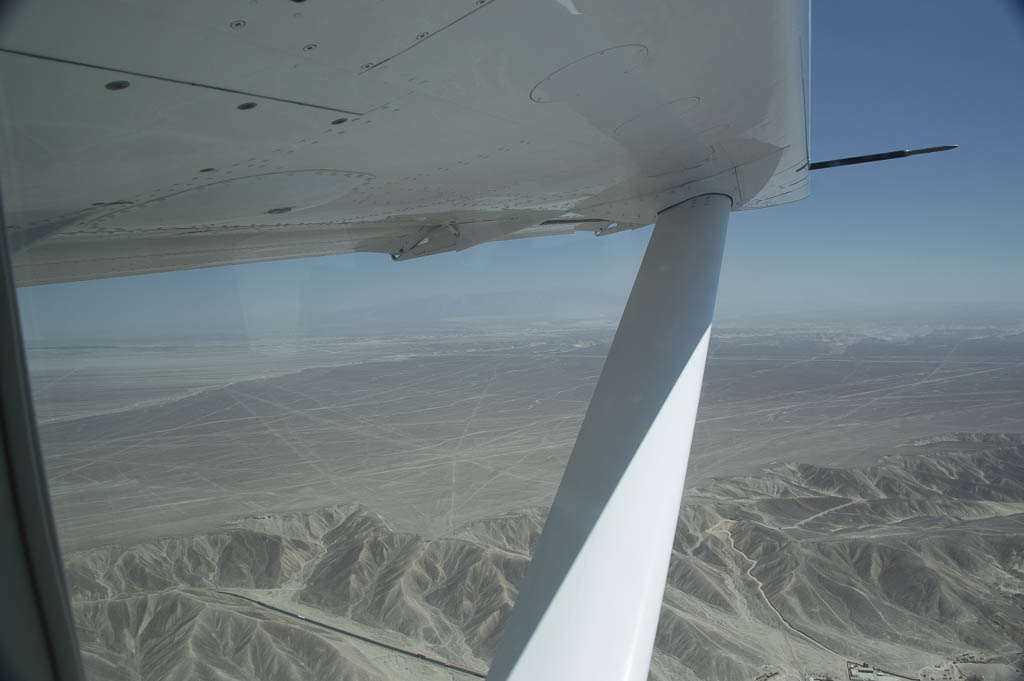
Some glyphs are simple designs like “The Hands” or the “Whale,” while others are complex like the “Hummingbird” and “Flamingo”. Nasca pottery from other Peruvian locations have similar drawings and depictions which has helped to identify and date the San Jose Plain glyphs.
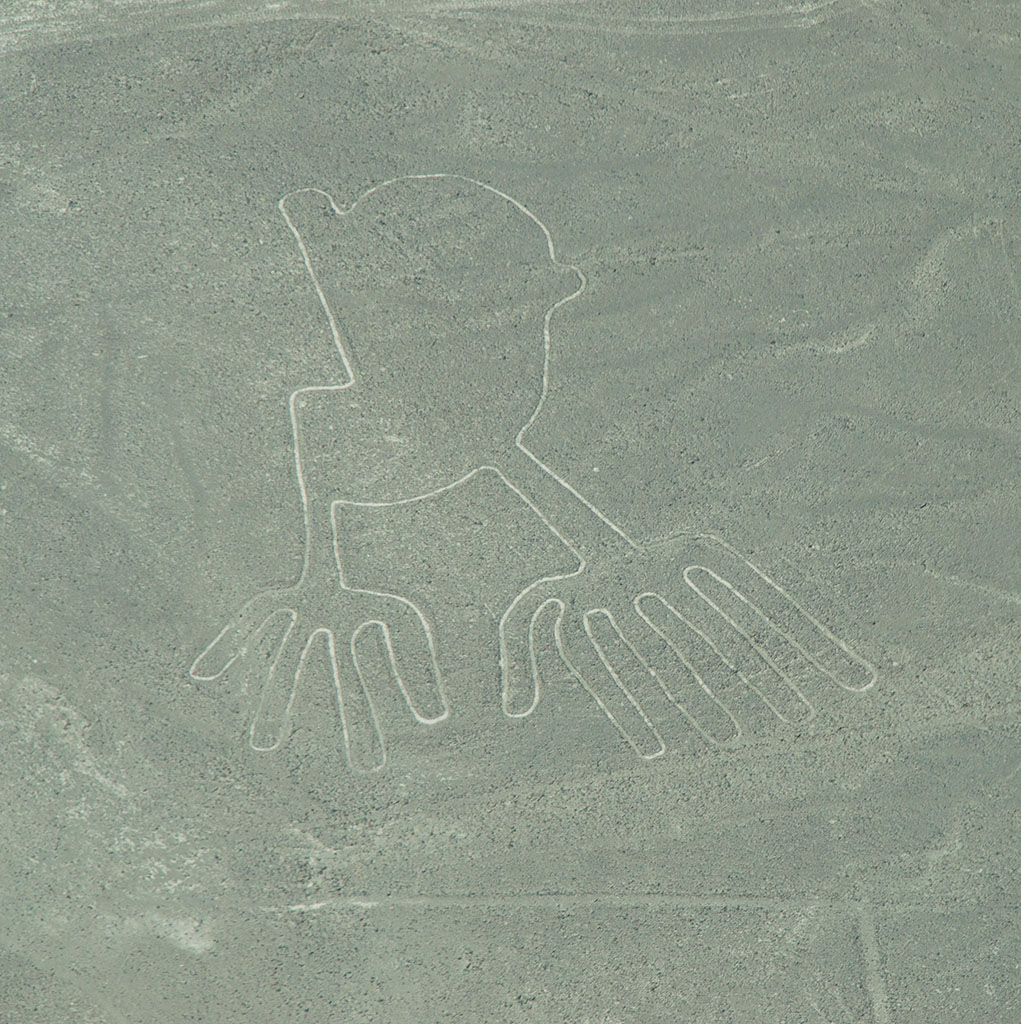
Scientist have yet to determine what many designs represent. Theories abound that some are sea creatures, flowers, cultivated vegetables, or an important cultural plant or tree. An example is the partially destroyed design shown next to the “Whale.”
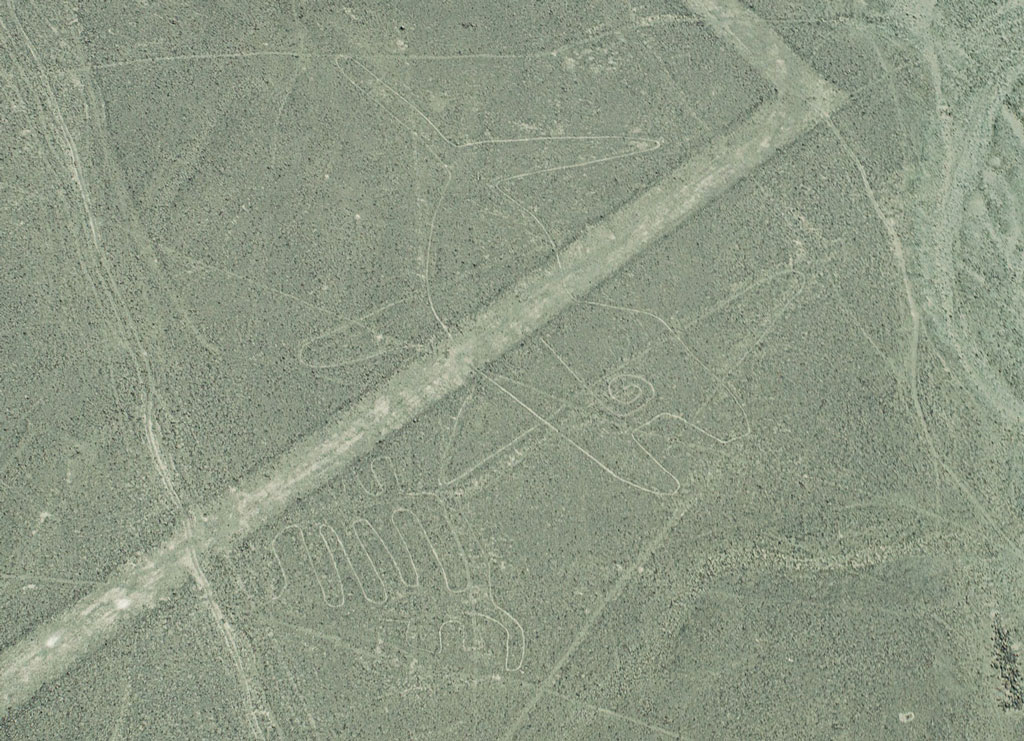
Some people believed that these designs could only be seen from the air. While the Nasca lines were drawn on flatter plains and difficult to see from the surrounding hills, many of the older designs were etched into hillsides and definitely meant to be viewed by those in the lower areas (like the Astronaut shown in Part I).
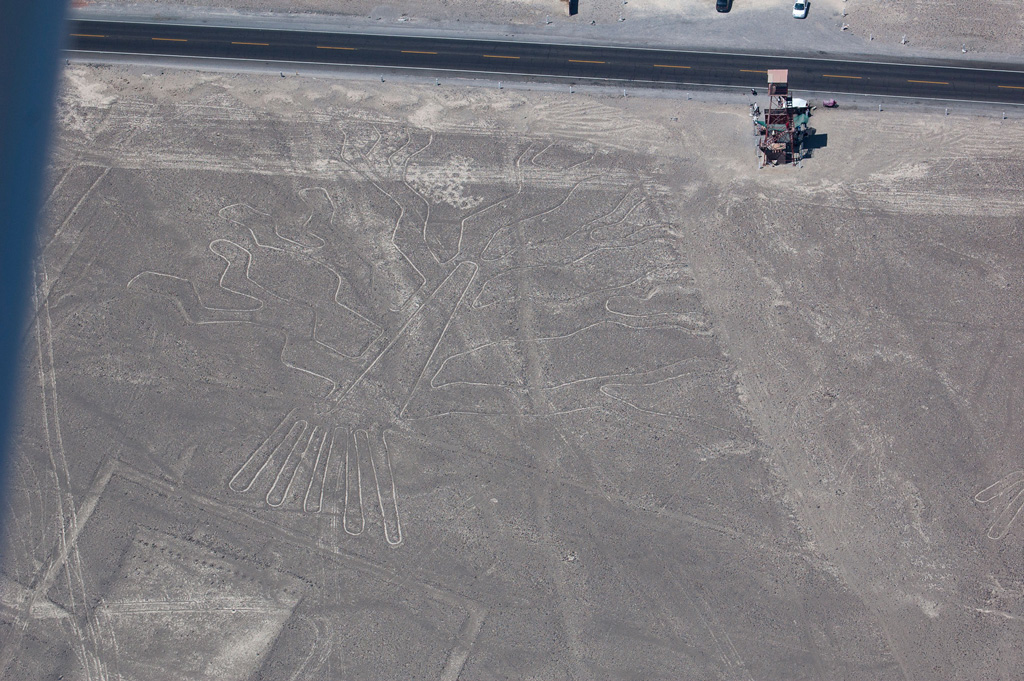
We move on to more intricate and larger geoglyphs. One of the most famous and beautiful is the Hummingbird. The glyph was well-executed and until recently in pristine condition. The Hummingbird also sits on a small plateau as you can see in our approach from the air in the photo below.

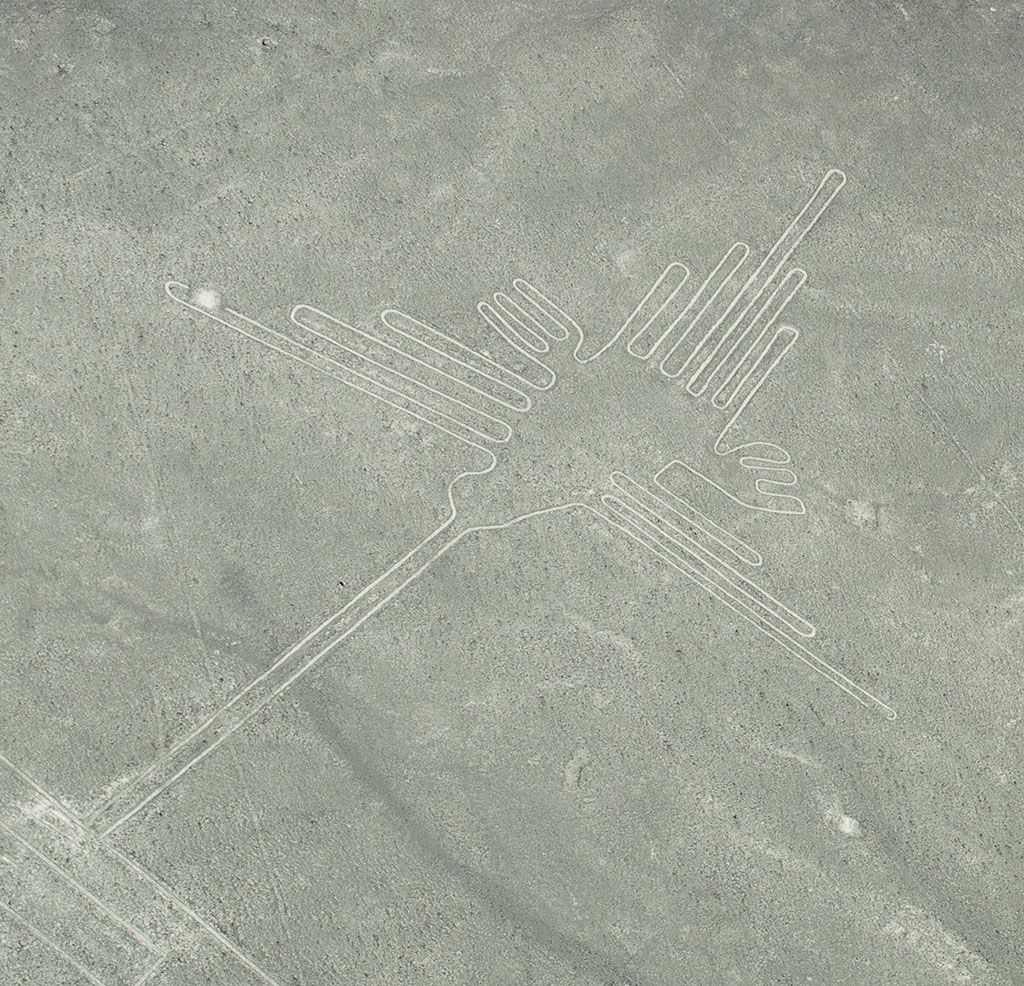
Not long after our visit to the Nasca Lines, Greenpeace placed a giant message next to the hummingbird to attract attention to climate change. Their actions and the sign damaged the fragile landscape . Researchers and visitors wear special foam pads on their feet and are restricted in number to preserve the glyphs. The demonstrators took no such precautions. Greenpeace apologized for their poorly conceived plan and paid reparations to the angered Peruvians. That money has aided in further research and exploration of the Nasca Lines and related history. Since then, Japanese and Peruvian researchers have discovered another 140 glyphs, many predating by four hundred years the ones on the Nasca (San Jose) plain. Many of the new finds are also on hillsides, showing that those were meant for human ground viewing.
Another unique glyph is the monkey with its spiral tail. The form is thought to represent rain as monkeys come from the Amazon area where rain is prevalent. This highlights the belief that the glyphs on the plain were done to entice the god(s) to provide rain for the parched area.

The Flamingo (also called the Heron) is hard to see as it is a huge and long glyph and difficult to get in a single photo at the altitude we flew over. The neck zigzags from the spread-winged body up to the head and beak which is partially cut off in the photo.
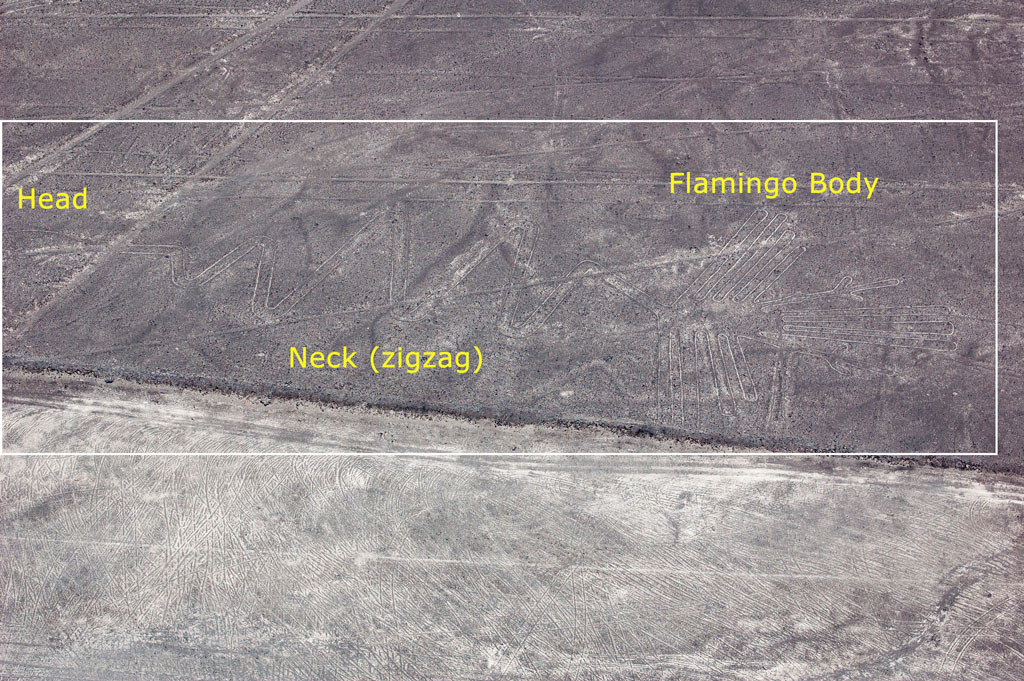

Check out more glyphs in Part I of the Nasca Lines and stay tuned for a look at the nearby Candelabra glyph and more about the actual flight around the Nasca Lines.

This is so interesting! Thanks for sharing. PBS has a program on that included the astronaut glyph. It does boggle my mind.
It is rather amazing. I love to watch shows about such curiosities. The best resource I’ve seen on the lines, though, is a wonderful book I got while I was there. Good historic data and lots of photos and comparisons to Nasca pottery.